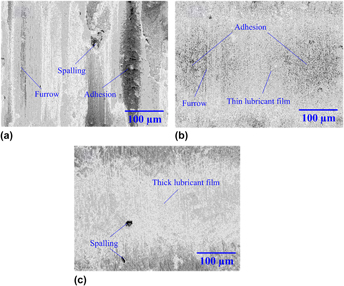Article contents
Tribological properties of lead-free Cu–FeS composites under dry sliding condition
Published online by Cambridge University Press: 07 November 2016
Abstract

Cu–FeS composites without lead were prepared by power metallurgy process. The friction and wear properties were examined on a “block-on-ring” testing machine under dry sliding conditions with and without oil immersion. Results showed that both the frictional coefficient and the wear volumes decreased with increased FeS content in the composite under dry sliding conditions. In the condition of dry friction without oil immersion, the FeS solid lubricating film formed and played a role of antifriction and adhesion resistance. Under the dry friction condition with oil immersion, the lubricant oil stored in the porous FeS layer precipitated to the surface to form the oil film, which could work together to achieve a liquid–solid synergistic lubrication with the FeS transfer film. The lubrication performance of the collaborative lubrication reaction is better than that of the solid transfer film. With the increase of FeS, the collaborative lubrication became more obvious.
- Type
- Articles
- Information
- Copyright
- Copyright © Materials Research Society 2016
References
REFERENCES
- 6
- Cited by





